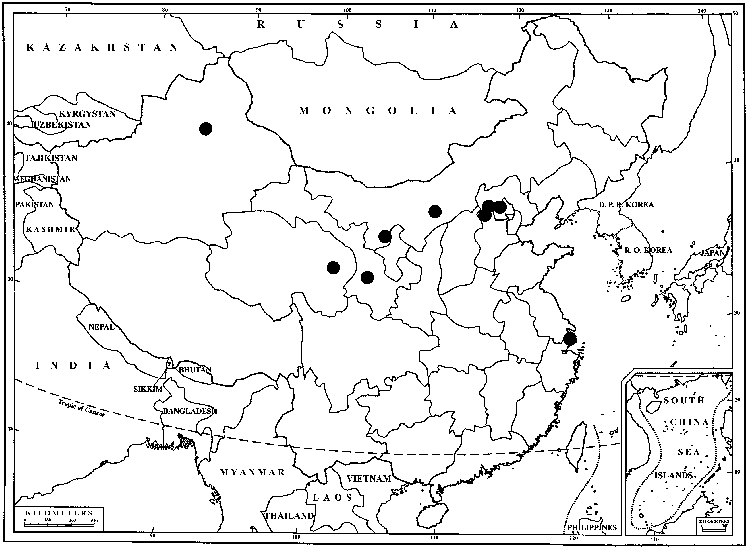Tortula mucronifolia
Sp. Musc. Frond. Suppl. 1(1): 136, plate 34. 1811,.
Leaves oblong-lanceolate to obovate or long-elliptic, apex rounded-acute, mucronate to short-awned, margins recurved at base or somewhat higher, not bordered or bordered at base with 3–5 rows of thicker-walled cells, 1–3:1; costa excurrent, lacking an adaxial pad of cells, distally very gradually narrowing, 3–5 cells across the weakly convex adaxial surface; distal laminal cells rounded-hexagonal, 14–20(–28) µm wide, 1:1, not papillose or very weakly so. Sexual condition autoicous. Sporophytes exerted. Seta 1–2 cm. Capsule stegocarpic, not systylius, cylindric, erect and nearly straight, urn 3–6 mm; peristome 1700–2000 µm, teeth of 32 filaments twisted at least 1 full turn, basal membrane high, ca. 1000 µm; operculum ca. 1–2 mm. Spores 12–18 µm, spheric, finely papillose.
Phenology: Capsules mature summer.
Habitat: Soil, calcareous soil, silt, rock, cliffs, walls
Elevation: low to high elevations (0-2700 m)
Distribution

Greenland, Alta., B.C., Man., N.B., Nfld. and Labr. (Nfld.), N.W.T., N.S., Nunavut, Ont., Que., Sask., Yukon, Alaska, Ariz., Calif., Colo., Conn., Idaho, Ill., Ind., Iowa, Mass., Mich., Minn., Mont., Nebr., Nev., N.Mex., N.Y., N.Dak., Ohio, Oreg., Pa., S.Dak., Utah, Vt., Wash., Wis., Wyo., Europe, n Asia, Africa.
Discussion
Tortula mucronifolia is quite close to T. subulata, differing largely in the clear medial laminal cells of the former, which are not or rarely papillose, and the marginal border less strongly developed or absent. Where their ranges overlap, intermediates may be found.
Selected References
None.